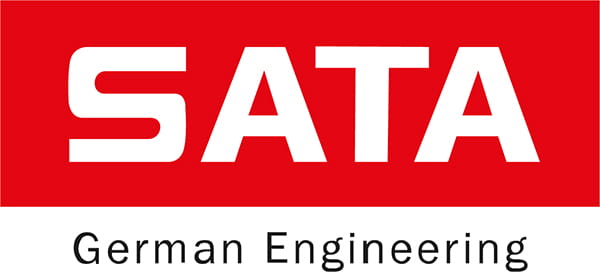Design blasting efficiently – a decisive cost factor
How to cut costs through optimized processes and the right choice of abrasives.
Learn moreFree DE shipping from €250
Price excl. VAT
Price excl. VAT

Price excl. VAT
Price excl. VAT
Price excl. VAT
Price excl. VAT
Price excl. VAT
Price excl. VAT

Price excl. VAT
Price excl. VAT
Price excl. VAT
Price excl. VAT
Price excl. VAT

Price excl. VAT

Price excl. VAT
Price excl. VAT

Price excl. VAT

Price excl. VAT

Price excl. VAT
Price excl. VAT

Price excl. VAT
Price excl. VAT
Price excl. VAT
Price excl. VAT
Price excl. VAT
Price excl. VAT
Discover high-quality abrasives such as aluminum oxide, glass beads, steel grit and plastic media as well as nozzles, nozzle holders, blast hoses, blast pots and blast cabinets. We also offer extraction and filter technology, personal protective equipment (PPE) and a wide range of accessories. Whether pressure blasting, siphon blasting, wet and slurry blasting or dry ice and soda blasting – we tailor your blasting solution precisely to the part, surface requirements and cycle time.
Blasting technology ensures consistent surface preparation, optimal adhesion for coatings and defined roughness profiles. For cleaning, decoating or matting – properly designed blasting systems increase process stability, reduce rework, lower media and energy costs and deliver reproducible surface results in both workshop and series production.
The range includes blast pots, metering and mixing valves, moisture traps, air dryers, protective and blast hoses, nozzle holders, blast cabinets, viewing windows, separators, filter and extraction systems, blasting hoods and PPE as well as pressure gauges, gauges, cleaning and test media. We verify the compatibility of nozzle, hose, air demand and abrasive and integrate the system into your workshop or line.
Go directly to Blasting technology – or consulting & compatibility check.
How to cut costs through optimized processes and the right choice of abrasives.
Learn moreHow targeted process monitoring and optimization improve the safety and quality of your blasting operations.
Learn moreRelated categories: Blasting equipment, Accessories & spare parts, Pressure tank, Pumps, Inspection
Common processes include compressed-air blasting (pressure and siphon), wet or slurry blasting, dry ice and soda blasting as well as turbine blasting. Applications include rust removal, paint stripping, cleaning, roughening/satin finishing, surface peening and pre-treatment prior to coatings.
Choose the abrasive based on material, target roughness (Rz/Ra), removal rate and recyclability: e.g., white aluminum oxide/slag for heavy cutting, glass beads for fine finishes, steel shot/grit for reusable media, plastic for gentle cleaning. Size the nozzle by orifice and Venturi geometry, and select pressure and air volume to match the part, media and compressor.
Influences include media type/grit/hardness, nozzle wear and orifice, blast pressure, standoff distance and impact angle, cycle time as well as extraction/filtration and moisture content. Proper recycling/separation, dry compressed air, tight hose connections and suitable PPE improve process safety, consistency and efficiency.
We support you in the selection of abrasives, sizing of nozzles, pressure & air demand and the integration of extraction/PPE – for efficient pre-treatment and reproducible results.
Request nowPlease feel free to contact us by phone or email and we will advise you quickly, competently and without obligation.
Mon-Fri, 9:00 a.m. - 5:00 p.m
If your shopping cart value exceeds 250.00 euros, we will deliver your order free of charge. If it saves delivery time, we will ship in multiple packages, of course at no additional cost.
Whether you live in Europe, Asia or the Americas – we deliver reliably to all regions of the world. This way you receive your order wherever you need it.
Ordering securely also means paying securely - we offer you various payment methods, such as purchasing on account, paying with PayPal or even credit card.
Ordered incorrectly or is it incompatible? Simply contact us within 14 days and exchange unused and originally packaged products free of charge.
We only sell products from well-known manufacturers or alternatives of equivalent quality. Feel free to convince yourself of our range.
Our customers rate us 4.52 out of 5.00 stars. With buyer protection, your purchases are protected, regardless of the payment method.
Functional cookies are absolutely necessary for the functionality of the web shop. These cookies assign a unique random ID to your browser so that your unhindered shopping experience can be guaranteed over several page views.
Allows Google to collect personal data for online advertising and marketing.
These cookies are used for statistics and shop performance metrics.
Tracking cookies help the shop operator to collect and evaluate information about the behaviour of users on their website.
These cookies are used to collect and process information about the use of the website by users, in order to subsequently personalise advertising and/or content in other contexts.
Marketing cookies are used to display advertisements on the website in a targeted and individualized manner across multiple page views and browser sessions.
Service cookies are used to provide the user with additional offers (e.g. live chats) on the website. Information obtained via these service cookies may also be processed for site analysis.

